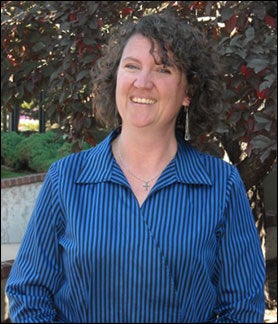New student information system takes significant step
The MetamorphoSIS project reaches its latest milestone on Monday, when the new student information system begins accepting course and class information for fall 2010. The launch is small in technical terms but big in terms of user-friendliness.
"The exciting part here is that we're really reaching out to end users this time," said Kari Branjord, executive director of MetamorphoSIS. The expansive, $50 million system is replacing the outdated student information system.
Between 150 and 200 end users of the new system are being trained to input course catalog information and the schedule of classes. Current and prospective students will use information from the system to register in April for fall 2010 classes.
"What's really going to be different is that this is a Web-based system instead of a mainframe, so there's a lot of new functionality that's going to help save a lot of manual entry," said LeeAnn Baronett, training and communications manager for MetamorphoSIS. With the new system, a drop-down list of selections is built in, so it's no longer necessary for users to look up codes on a cheat sheet. "It's not a big change in terms of process; it's just more user-friendly."
The course and class information entered into the system will feed into the course catalog used by prospective students. The same data also will be used by the registration system that students use each semester, and which also tracks faculty workload and classroom use.
"One of the important keys to the success of the project thus far is the high degree of collaboration among the stakeholders on each of the CU campuses and the project team to identify and implement best practices for the benefit of our students," said John Cooney, associate vice president for administration. "The commitment to collaboration is evident at every level of the university, from the student services offices all the way to the chancellors. It is an excellent example of how to leverage resources to serve the unique needs of each of the CU campuses with a shared service."
The university will continue to roll out the new system in stages through the end of next year. Later this month, admissions staff will begin processing transfer credit for new undergraduate students who start in fall 2010. Results of transfer credit evaluation will be delivered from the Degree Audit Reporting System (DARS) to the student information system.
The next project launch comes in November, with the addition of financial aid, scholarship and student financial data.
"The project is on schedule," Branjord said. "It's not without pressure, but the teams are rising to the occasion. We expect this latest go-live to run fairly smoothly."
Next year's rollouts will include financial aid processing in January; registration, financial aid award notices, process transfer credits for new students in degree audit, and transfer articulation system in February or March; student financials in July; financial aid disbursement in August; and transcripts and end-of-term processing between September and December.


